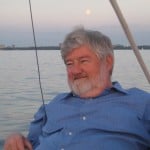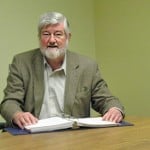The following is a further posting in a series of articles by David French, a patent attorney with 35 years experience, which will review issues of interest touching on the field of Cold Fusion.
As a preliminary matter, I have been asked why I am doing these postings. I have a message. That message is:
“Patents are a vast resource for learning about what is going on. Read them. Understand them. And you will make better inventions yourself.”
The present posting continues with that objective.
In Part 1 of this posting we examined how Cold Fusion applications and patents are classified under the traditional United States patent office classification system. Patents are also classified by another system, extensively in use in Europe and elsewhere and also used as a secondary classification system within the US patent office. This is the system of the International Patent Classification – IPC sponsored by the World Intellectual Property Organization – WIPO in Geneva. WIPO is the same organization that operates the Patent Cooperation Treaty – PCT.
Currently, US patents are simultaneously classified both under the US classification system and under the IPC. This has not been true in the past, but it is true today. And through back-classification, US patents from about 1902 onwards are now also classified under the IPC.
The IPC is an intuitively designed method for classifying inventions. The first number of the class is always a letter of the alphabet that corresponds to one of the following:
International Patent Classification
Section A — Human Necessities
Section B — Performing Operations; Transporting
Section C — Chemistry; Metallurgy
Section D — Textiles; Paper
Section E — Fixed Constructions
Section F — Mechanical Engineering; Lighting; Heating; Weapons; Blasting
Section G — Physics
Section H — Electricity
The section that concerns us is: G-Physics. Subsection and further subsections that concern us are:
G21
NUCLEAR PHYSICS; NUCLEAR ENGINEERING
G21B
FUSION REACTORS (uncontrolled fusion, applications thereof G21J
Low-temperature nuclear fusion reactors, e.g. alleged Cold Fusion reactors [8]
(enter the subclass on the IPC Home page in the left-side box under “Current symbol” to view subclass)
In the case of the IPC there is an actual category for a “low-temperature nuclear fusion reactor”. The full classification code is: G21B 3/00. With this code, searches for patents can be carried out in various patent offices around the world. Here are some results for searches at the European Patent Office – EPO.
EPO Search
In the EPO there is a single database that includes both applications and patents. A document that contains the letter “A” in its reference number relates to an application. A document that contains the letter “B” in its reference number refers to an issued patent.
Searching in the EPO patent and patent application database using the IPC classification G21B3/00 (on the date of this search, May 15, 2012) as the search term produces 93 results. Here is the resulting list of viewable documents identified in the search.
We can carry out this search a second time combining the specific class with additional terms. Here are the results when searching for the combination of: “Cold Fusion” in the full text of a document and G21B3/00 as the IPC classification – 12 results found. Here are the results of that search.
It is pretty clear from these search results that the European Patent Office is at least receiving applications that are directed to Cold Fusion related inventions. Due to the delays in examination that can amount to 4, 5 and 6 and more years, few of these applications have issued patent. (An issued patent has a number with B-in-a-bracket following.) But it is often advantageous for an applicant to have the actual grant of a patent delayed.
IPC searching at the US PTO
Returning to the US patent office, searches can be done amongst pending applications and issued US patents using the IPC classification system. Here are some of the results on the patent side, done around May 15, 2012:
USPTO Search
Results of Search in US Patent Collection db for:
ICL/G21B3/00: 31 patents.
Results of Search in US Patent Collection db for:
(ICL/G21B3/00 AND fusion): 23 patents.
Results of Search in US Patent Collection db for:
(ICL/G21B3/00 AND “Cold Fusion”): 19 patents.
Results of Search in US Patent Collection db for:
(ICL/G21B3/00 AND “excess heat”): 15 patents.
Results of Search in US Patent Collection db for:
((ICL/G21B3/00 AND “Cold Fusion”) AND “excess heat”): 12 patents.
The above searches were done amongst issued US patents using the IPC classification system. Here are some of the results on the application side:
Results of Search in AppFT Database for:
ICL/G21B3/00 and “Cold Fusion” and “excess heat”: 7 applications.
And here is an actual list of pending applications that meet the above search criteria:
PUBLISHED APP. NO. Title
1. 20120069945 INTERACTIONS OF CHARGED PARTICLES ON SURFACES FOR FUSION AND OTHER APPLICATIONS
2. 20110142183 Multiring apparatus and method to measure heat released by a sample loaded with hydrogen
3. 20100303188 Interactions of Charged Particles on Surfaces for Fusion and Other Applications
4. 20100195780 Apparatus and process for thermal gradient-driven metal catalyzed fusion reactor
5. 20100008461 Cold Fusion apparatus
6. 20090122940 LOW TEMPERATURE FUSION
7. 20080205572 Apparatus and process for generating nuclear heat
(Hyperlink access to these applications is available here.)
While the titles provide some indication of the content of the documents, the above results do not necessarily mean that these patent applications actually address Cold Fusion. It only means that this term or phrase was used somewhere in the document, along with “excess heat”. They have, however, been classified by a classification examiner in International Class G21B3/00.
Furthermore, even if a patent issues on any of these applications, this does not mean that a useful process for delivering unexplained excess heat has been described. Many times examiners choose not to challenge an applicant to prove utility. It is possible to file a patent application that is totally erroneous, and sometimes it will slip through, surprisingly, more often than not.
Additionally, if a patent application describes a process that could possibly be useful to provide excess heat through Cold Fusion, but only claims a collateral arrangement which is apparently operative, then the patent will issue. This is because the patent is not directed to controlling the generation of heat through Cold Fusion. Patents are classified according to what they claim.
Where is the breakthrough patent?
Almost certainly many other patent offices around the world have been receiving applications relating to Cold Fusion. Most of these applications will eventually be paralleled at the US Patent Office. These applications may describe a valid process, or not. Anyone can search and review such documents once they are laid open to the public. If anyone has filed an absolute winner patent application that describes how to make it happen, we would almost certainly know about it once 18 months have passed from the original filing date.
Most countries in the world allow private research to be carried out notwithstanding the existence of an issued patent. Furthermore, applications cannot be used to disrupt even full-out commercialization up to the point when a patent is granted. Once a patent issues, compensation can be required for pre-grant use, and an injunction may issue. But with some 150 countries around the world, it is unlikely that any person obtaining a controlling patent in the field of Cold Fusion will be able to shut-down everywhere the exploitation of the knowledge provided in a patent application that describes a working process. This is just as true concerning Cold Fusion as it is true concerning the alleged 100 mile per gallon carburetor.
Accordingly, there is good reason to believe that the breakthrough knowledge to solve the Cold Fusion riddle and provide the world with its stream source of energy has not been addressed in a patent filing, unless it is amongst those applications still pending in their 18 month secrecy period..






